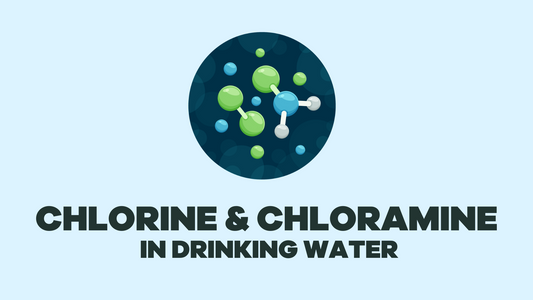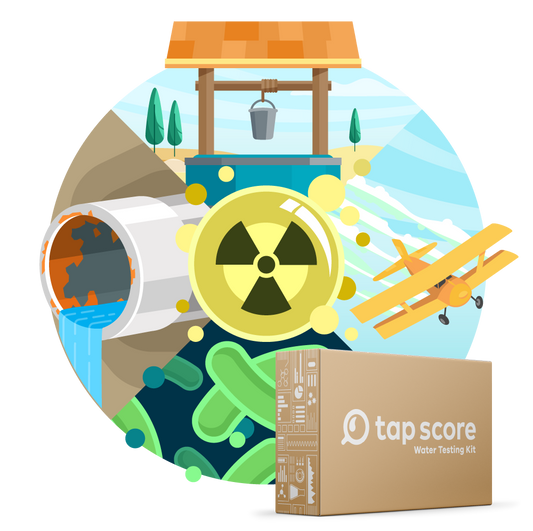
What Is the Pink Slime in My Bathroom?
If you’ve ever noticed pink slime or residue form around your sink or shower, along the rim of your toilet, or even inside your pet’s water dish–you’re not alone. In fact, it’s a very common, but easily misunderstood issue. The biggest misconception surrounding pink slime is that it’s caused by a mold. It’s not. We're here to help you identify and treat Serratia marcescens by answering:
- What causes pink slime?
- How do I get rid of pink slime?
- Is pink slime dangerous?
What Is the Pink Slime in My Bathroom?
Pink slime is most frequently caused by an airborne bacterium called Serratia marcescens.[1] Found worldwide, S. marcescens thrives particularly well in damp environments. The bacteria grow well on materials containing phosphorus or fatty substances (such as feces in your toilet bowl, or soap residue in your shower)–which makes your bathroom its ideal environment.
This means you're not actually dealing with a water contaminant, but an air quality contaminant. Since Serratia marcescens forms a pink/red biofilm at room temperature it is also easily confused as an iron-related water quality issue in the water.
This leads us to another common misconception: water treatment equipment can help. Serratia marcescens transports by air, not by water, so water filters won’t likely help solve the problem.
So to our next question: “If it’s in the air, how do I get rid of Serratia marcescens?”
How Do I Get Rid of Serratia Marcescens?
The name of the game when it comes to pink slime and S. marcescens is “management,” rather than elimination. Unfortunately, no matter how much you clean, the plentiful supply of this airborne bacteria makes getting rid of its pink slime very difficult.
Steps you can take to reduce the amount of pink slime that appears in your bathroom are:
- Ventilate the room during and after a shower for at least 30 minutes
- Use an after-shower spray or squeegee to remove soap residue in your shower and tub
- Limit the amount of moisture and soap scum you leave on surfaces
If you are already faced with the nuisance of pink slime, here’s how you can “get rid of it”:
-
Make a one-part vinegar and one-part water solution.
-
Spray the mixture onto the pink slime that has already left its mark.
-
Let soak for 10 minutes.
-
Scrub away the bacteria.
You can also use this bleach solution.[2]
Be aware, however: it’s very likely that the pink slime will re-grow. It may be only just a matter of weeks before it reappears.
A couple of other things to note: Serratia bacteria will not survive as well in chlorinated drinking water. However, because chlorine is a volatile compound, if water stands long enough for residual chlorine to dissipate (i.e a toilet or on a shower curtain), the pink slime may develop.
People who remove chlorine from their water by the use of an activated carbon filter are therefore more likely to encounter pink slime.
Additionally, more people indicate the problem occurs in the summer months when temperatures and humidity are higher. This holds even more true if windows are left open for an extended period of time. Because Serratia marcescens can be stirred up during yardwork or construction, it is highly recommended that you take extra precaution to keep windows closed during these periods.
Is Serratia marcescens Dangerous?
While the bad news is that it is nearly impossible to eliminate, those pink, slimy rings are harmless (unless you are in extremely poor health).
While in very rare cases, Serratia marcescens has been deadly–for most folks, Serratia marcescens poses almost no health risks.[3] The scary, pink slime horror stories found on the internet are mostly in relation to hospital-acquired infections (which may occur if the patient’s immune system is severely compromised and the bacteria enters parts of the body that should be sterile, such as the lungs, blood or brain).
Interesting Note:
While Google searches may have you thinking Serratia marcescens is a medical nightmare, it actually gets more interesting.
The red pigment the bacteria produces, (called prodigiosin) have been suggested to have cancer-fighting properties.The exact nature of how it interacts with malignant cells unclear and the topic is still being studied.[4]
What’s the takeaway?
With a little elbow grease, you can manage the pink slime problem. That being said, you’ll be hard-pressed to eliminate pink-slime forever–so keep some cleaning products handy and know you are in good company.
Why Trust Tap Score?
We know how confusing it can be to find advice on water quality and treatment you can trust. That’s part of the reason we made Tap Score—to help improve the way you test and treat your drinking water.
-
No affiliate links: Unlike most sites revolving around water quality, we do not take a cut from sales on filtration systems.
-
Unbiased advice: Our blog is independently researched by our science team and designed to provide clarity on water quality, not to sell treatment products.
-
Independent laboratory testing: Tap Score test results come from SimpleLab's third-party network of certified laboratories; in other words, the labs provide the data—without any conflicts of interest.
-
Continuously updated: Science never rests. That’s why our content always reflects the latest developments in scientific research and regulatory standards.
-
Always available: Our customer service team is the best in the industry and available via chat if you have any questions about water quality.











